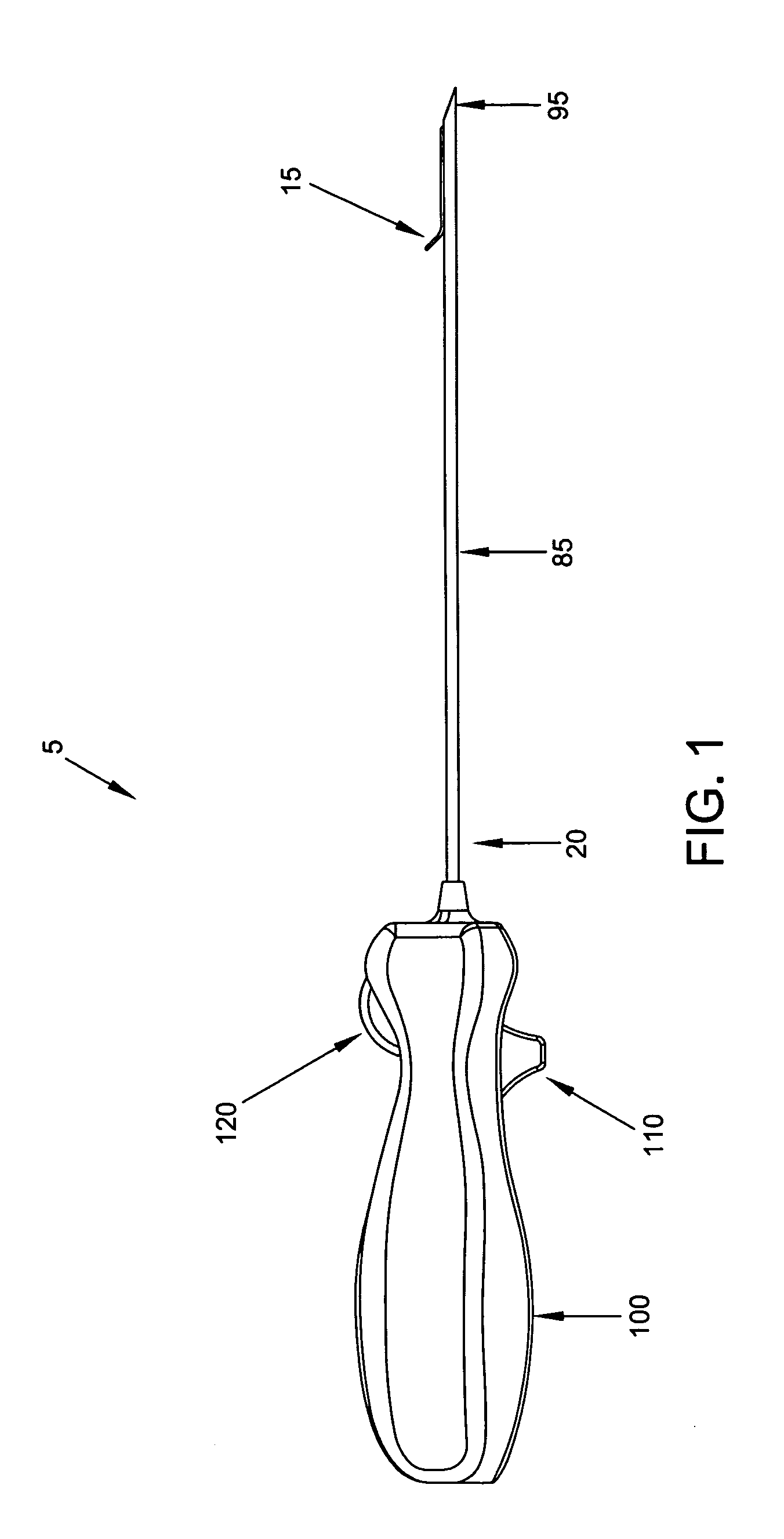Method and apparatus for meniscal repair
a meniscus and surgical technology, applied in the field of surgical methods and equipment, can solve the problems of affecting the normal movement of the knee joint, and the meniscus being frequently damaged,
- Summary
- Abstract
- Description
- Claims
- Application Information
AI Technical Summary
Benefits of technology
Problems solved by technology
Method used
Image
Examples
Embodiment Construction
[0063]Looking first at FIGS. 1-3, 3A and 3B, there is shown a novel system 5 for meniscal repair. System 5 generally comprises a plurality of anchors 10, a length of suture 15 and an inserter 20.
[0064]Anchors 10 are shown in greater detail in FIGS. 4-10. Each of the anchors 10 generally comprises an elongated body 25 which, in its preferred construction, is generally cylindrical so that it can make a close sliding fit within the lumen of a hollow delivery needle, as will hereinafter be discussed in further detail. Elongated body 25 is characterized by a distal end 30 and a proximal end 35.
[0065]On a “top” side of elongated body 25, a distal slot 40 extends proximally along the elongated body, with distal slot 40 comprising a wide section 45 and a narrow section 50. Also on the “top” side of elongated body 25, a proximal slot 55 extends distally along the elongated body, with proximal slot 55 comprising a wide section 60 and a narrow section 65. Distal slot 40 is aligned with proxima...
PUM
 Login to View More
Login to View More Abstract
Description
Claims
Application Information
 Login to View More
Login to View More - R&D
- Intellectual Property
- Life Sciences
- Materials
- Tech Scout
- Unparalleled Data Quality
- Higher Quality Content
- 60% Fewer Hallucinations
Browse by: Latest US Patents, China's latest patents, Technical Efficacy Thesaurus, Application Domain, Technology Topic, Popular Technical Reports.
© 2025 PatSnap. All rights reserved.Legal|Privacy policy|Modern Slavery Act Transparency Statement|Sitemap|About US| Contact US: help@patsnap.com



